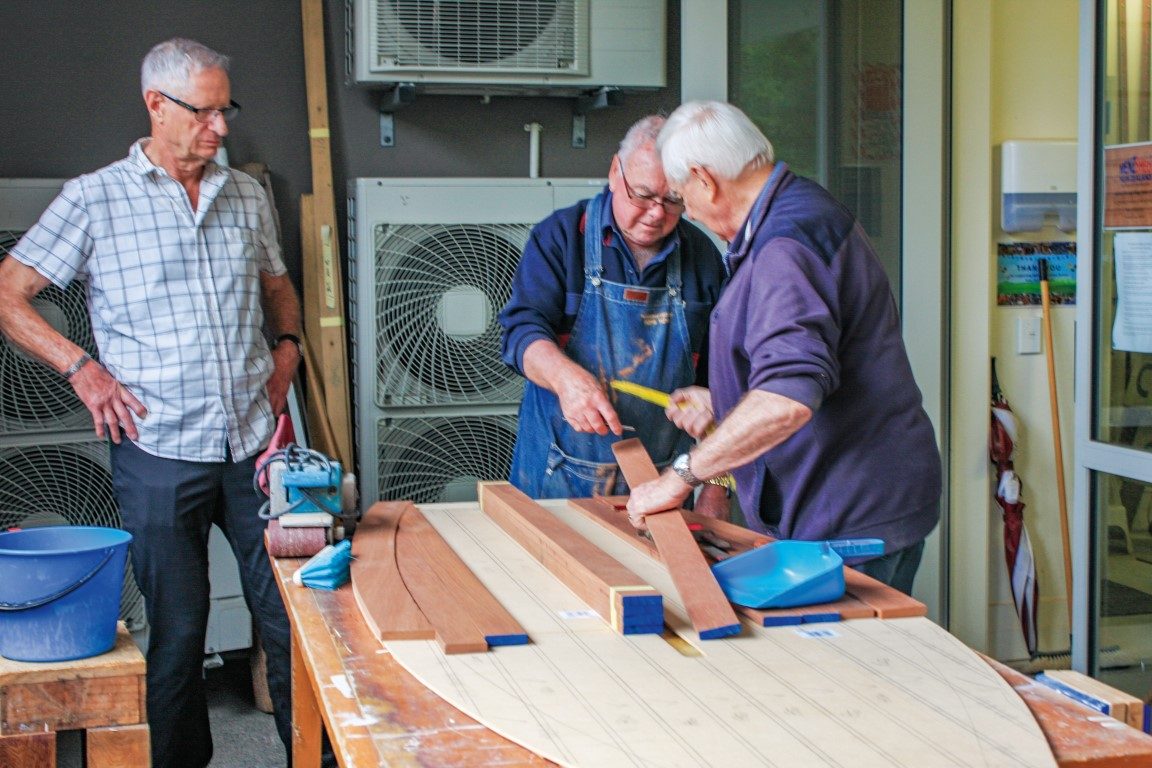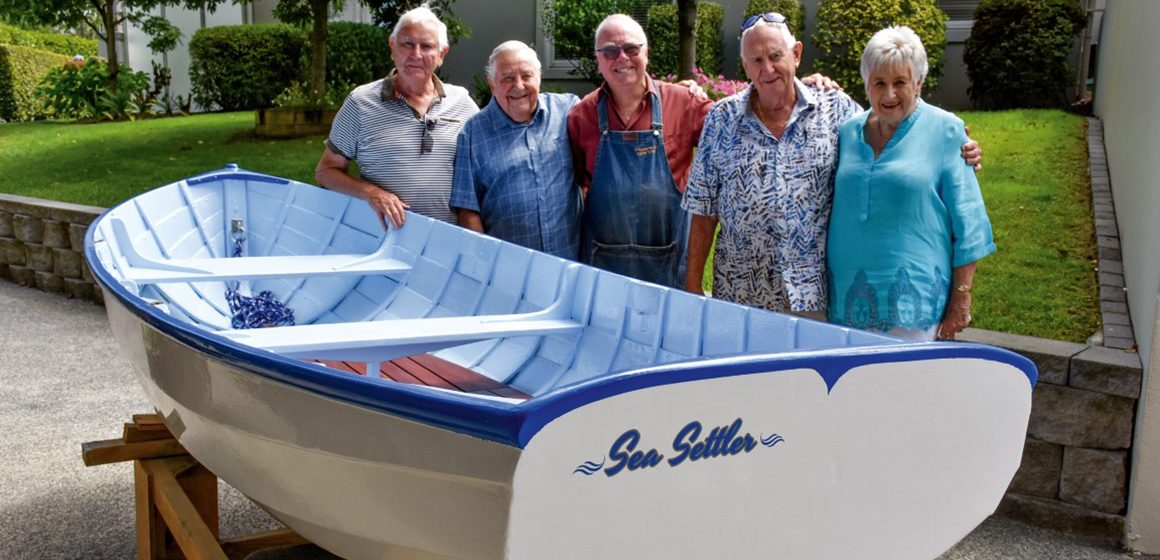

There’s a growing group of older Kiwi boaties who appreciate our maritime heritage, writes John Morris. They take great pains to bring old wooden boats back to life.
Good on them, I say. They extend and often double the vessel’s life, reminding us of the days when boats were built as one-off works of art before fibreglass and carbon and new-fangled chemical aids. I have seen bronze plaques on bulkheads stating: “If God wanted us to have fibreglass boats he would have made fibreglass trees.”
As a keen ex-keeler yachtie I did not think that I would get personally involved in restoring a wooden boat, but fate decided otherwise. It happened while visiting an old business acquaintance of mine, Richard Leach, at his lifestyle block in Stillwater in 2020.
In his tractor shed, whimpering for attention, was a derelict, barely recognisable 3.2m clinker dinghy full of dust and hay and discarded implements. Sadly, she was also destined to be discarded. I felt a bout of nostalgia coming on – I used to row one of these during my boyhood.
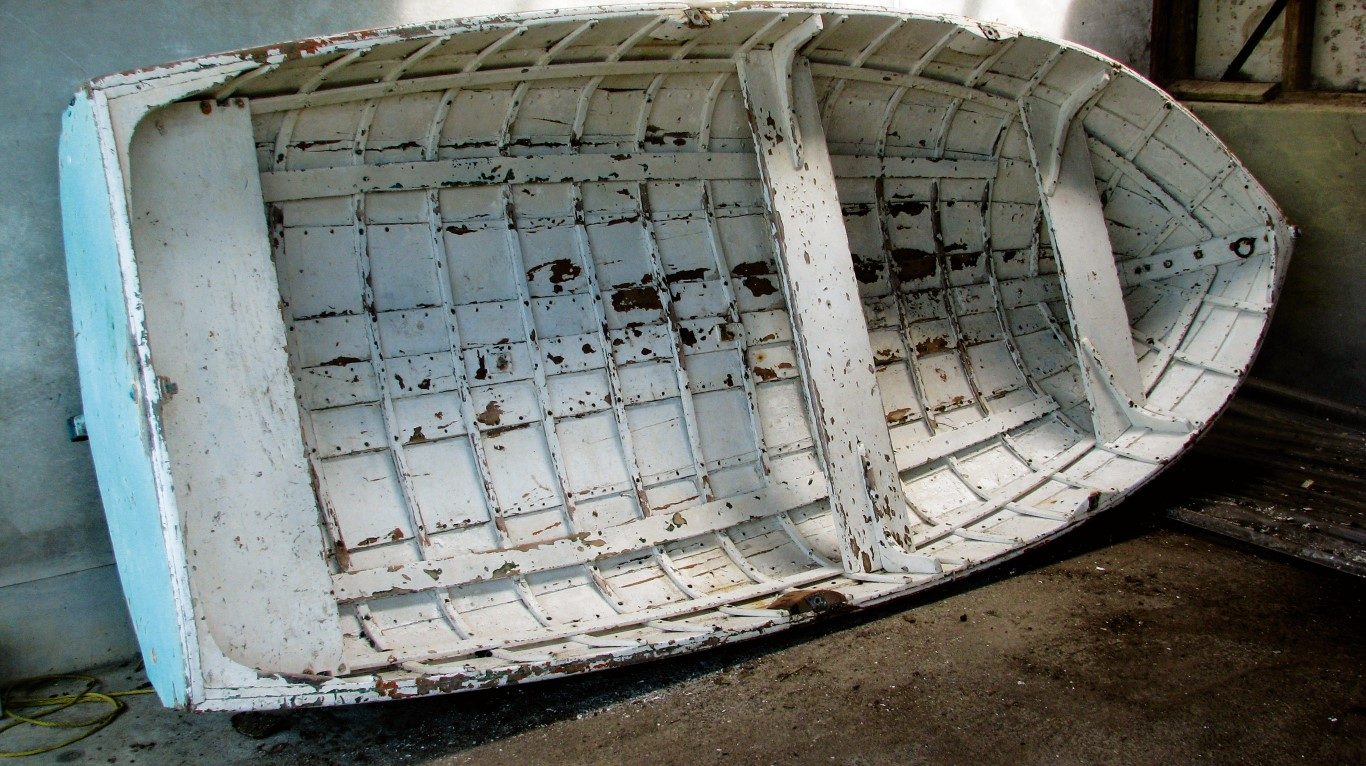
“Must be 100 years old,” said Richard. “ I found her under a bach we bought in Cooks Beach in 1963 and in 1968 brought it up here with the intention of restoring her myself. But I decided that she was too heavy to transport up and down to the estuary, so I put the project in the ‘too hard’ file and bought an aluminium boat instead.”
Obviously the neglect had continued, so I asked if I could take it on “because it’s there.”
We took her up to a small, empty shed and water-blasted the dirt off the inside. At first the intention was to hand-strip the old paint. The project almost died right there because hand-stripping would take over a year at best. I realised that sand-blasting would ruin the timber, so I asked everyone in the business of paint stripping if there was a safe method. One of these people recommended a firm called Dustless Blasters, which agreed to take on the job although they had never treated a wooden boat before.

So we took her down to Pukekohe where they blasted off 99% of the rock-hard paint in two hours without damaging the kauri. Though costly, the process saved many months of hard labour, as well as eliminating an awful mess at our workplace.
Being a resident of Settlers Lifestyle Village in Albany, I believed that our well-equipped Blokes’ Shed would be an ideal venue as the workplace, but the job would need an expert’s TLC. A fellow resident, ex-master boatbuilder Alan Young, was asked if he would be prepared to take on the task. He used to build NZ 37s and Formula 4000s, among others, as well as single-handedly building his own 55ft (16.8m) ocean-going ketch. No one else had his expertise and experience, so he said he would be happy to be involved. The ultimate goal of the project was to produce a perfectly restored classic and offer it for sale with any proceeds going to the charity of Settlers’ choice.

There was still quite a lot of boat building to do such as clamping up a sprung gunwhale and repairing a cracked bottom board. Clamping back the gunwhale was a creative challenge in itself, as was the fitting of a new brace under the centre seat. After these initial boat building problems were solved, all graunched areas were filled with West System epoxy and sanded smooth. The bottom edges of the kauri strakes were also rounded off.
When this remedial work had been completed, the entire hull was sealed, inside and out, with West System epoxy resin – the boat should now last far longer than anyone could have imagined. Two coats of special marine undercoat prepared the inside, after which blue Sanding Guide was wiped all over so that the ‘sandman’ could monitor progress while removing all the blue stain. (Any remaining blue stain is removable with an Acetone wipe over.)
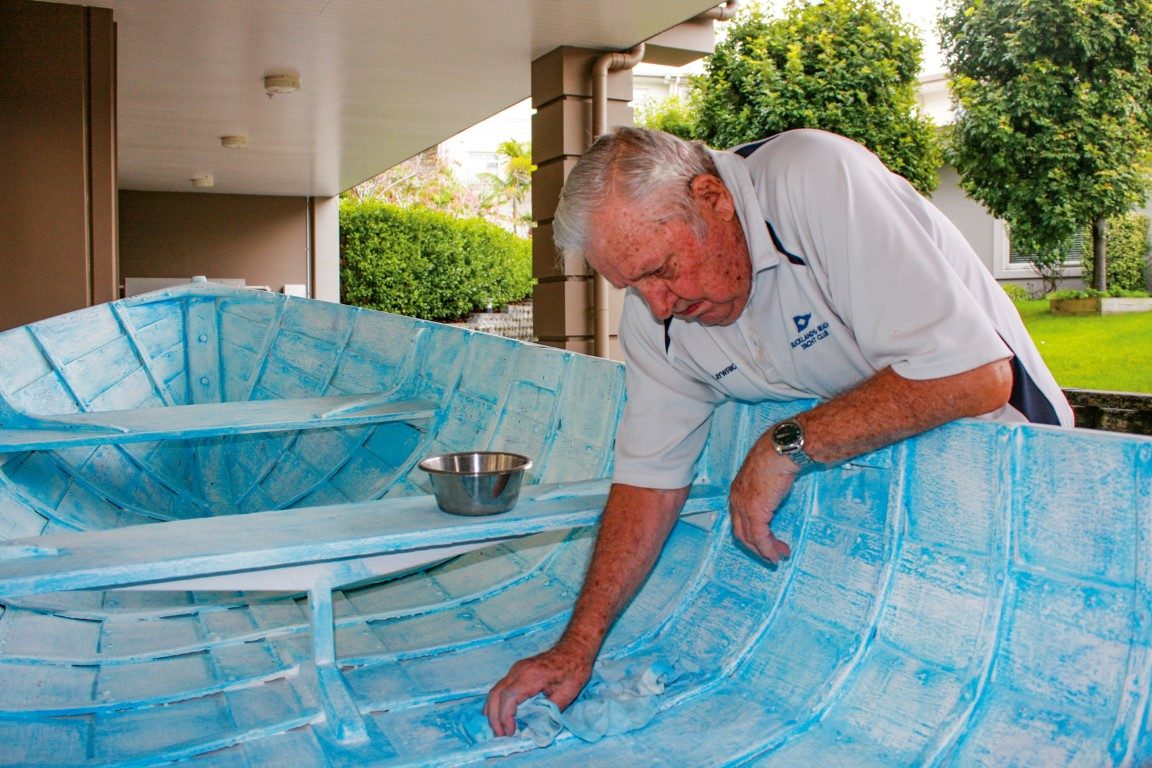
The final smooth surface was now ready for the finishing coats using Altex products. Properly applied, these finishes rival spray painting, so Sea Settler would live up to the highest standards of professional marine finishes. (We could not spray paint because it would have meant building a spray booth outside the Blokes’ Shed).
While all this work was in progress, the styling of the floorboards was discussed. Instead of straight rectangular slat-type, a particle board pattern was created by Alan and built as a template fitted inside the hull as an accurate guide. Sapelle mahogany timber was cut to shape, put through the thicknesser to around 10mm and built to fit the perfected template. This was an example of Alan’s master boatbuilding skill that would become a key feature.
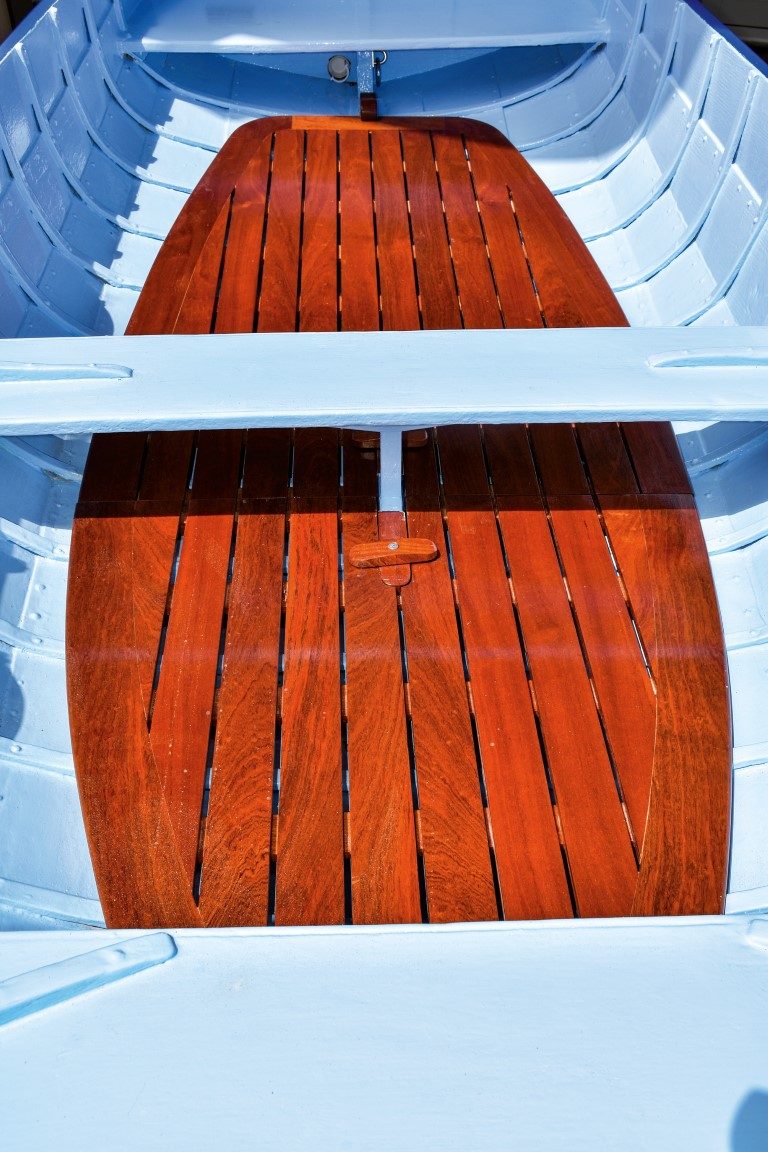
Attention to detail such as the floorboards is vital to any restoration because prospective buyers of classics demand pefection.
The interior of the hull was painted Tropical Blue using Altex Carbothane 134 H G. The hull was turned over and finished with two coats of Altex Elite gloss-white and a stainless-steel keel strip supplied by Silverdale Sheet Metals. Sea Settler was then turned again and trimmed with a navy blue coloured gunwhale. The gloss varnished floorboards and hardware were then fitted as the final touch.

A research contact, a builder in Whangarei of new timber boats of classic design, believed that this larger style clinker dinghy was probably designed by Arch Logan and could have been used as a crew tender for one of the lovely A-class keelers of the era. The secretary of the Rotoiti Classic Boat Society recommended endorsement with the name of the artisan involved so a bronze name plaque was added. Any potential buyer would then know that the work had been done by a professional.
Regattas involving keelers and launches and small boats of bygone days are still a sight to behold. Some of these sleek old A-class keelers can occasionally be observed towing a classic dinghy, also brought back to relive our maritime heritage.
Who knows? Sea Settler may join this resurrection revolution some sunny day, enjoyed by a proud new owner who appreciates true craftsmanship. Why settle for less?
